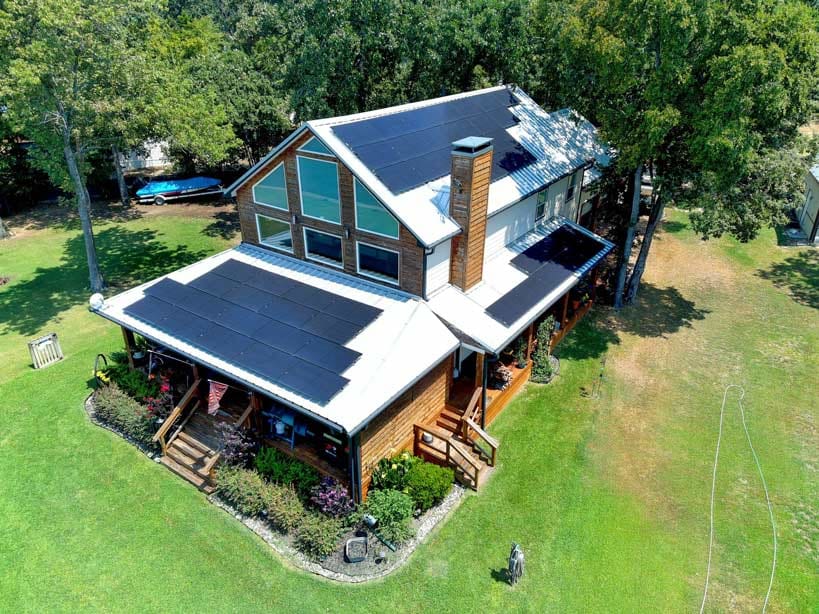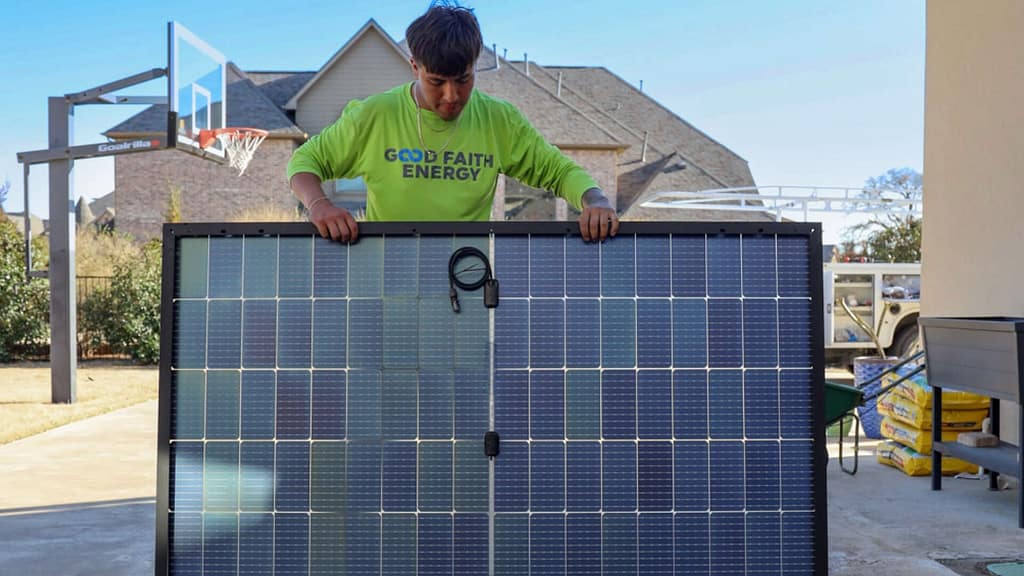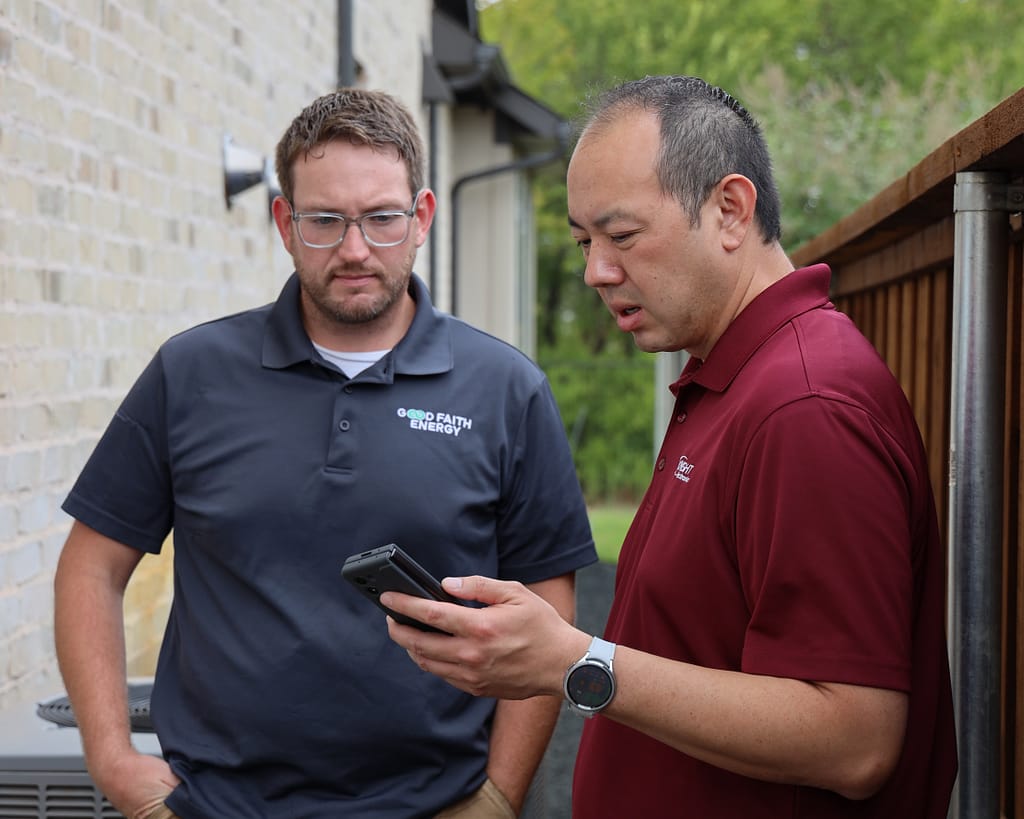From the reduction in gas emissions during energy production to the breakdown of materials after their lifespan, solar panels have more impact than providing sustainable energy. Proper recycling techniques help minimize waste, reduce the need for raw material extraction, and ensures toxic substances are handled safely.
Table of contents
The Environmental Impact of Solar Energy

Switching to solar energy doesn’t just benefit your wallet; it also makes a significant positive impact on the environment. Here are some key ways solar energy helps reduce your carbon footprint:
Reduction in Greenhouse Gas Emissions
Traditional energy sources like coal, oil, and natural gas release harmful greenhouse gases when burned, contributing to global warming and air pollution. Solar energy, on the other hand, generates electricity from the sun without emitting these harmful gases. By switching to solar, the average homeowner can offset several tons of carbon dioxide emissions annually.
Decreased Reliance on Fossil Fuels
Fossil fuels are not only finite resources but also major contributors to environmental degradation. Solar energy provides a renewable, sustainable alternative that reduces our dependence on these deletable energy sources.
Conservation of Water Resources
Traditional power plants use vast amounts of water for cooling and energy production, putting pressure on local water supplies. Solar panels generate electricity without using water, making them a much more sustainable option.
Mitigating Urban Heat Islands
Installing solar panels on rooftops can help reduce the urban heat island effect, where cities become significantly warmer than surrounding rural areas due to heat-absorbing infrastructure. Solar panels reflect and absorb sunlight, reducing heat buildup.
Environmental Impact of Used Solar Panels

Ever wonder what happens to your old solar panels? They’re not just discarded—they’re given a second life through advanced recycling techniques. Proper recycling minimizes waste, reduces the need for raw material extraction, and ensures toxic substances are handled safely. As solar adoption grows, the push for improved recycling infrastructure and practices in the U.S. is becoming a critical focus for sustainability efforts.
Types of Solar Panels
Solar panels currently in use are primarily categorized as silicon-based or thin-film, and the recycling process varies slightly between these types. Silicon-based panels are the most common, featuring crystalline silicon cells encased within glass and supported by aluminum frames. Thin-film panels, on the other hand, utilize a mixture of metals such as cadmium, tellurium, or copper, making their composition distinct and requiring specialized recycling approaches.
Collection and Transportation
When solar panels reach the end of their typical lifespan, usually after 25-30 years, or sustain damage, companies collect them for recycling. Recycling centers or specialized facilities then transport the decommissioned panels to locations equipped to handle their unique materials. This process plays a crucial role in recovering and repurposing valuable components, preventing them from ending up in landfills.
Disassembly and Material Recovery
Recycling facilities break down solar panels into their core components using manual or mechanical processes. For silicon-based panels, workers or machines first remove the aluminum frames and recycle them for various applications. They then separate the glass sheets and repurpose them into new glass products. The silicon cells undergo heating to remove plastic back sheets and encapsulates, allowing for the recovery and refinement of silicon wafers for reuse in new panels or electronic devices. Additionally, copper wiring is stripped and melted down for reuse in other products.
For thin-film panels, the recycling process involves shredding the panels into smaller pieces. The materials are then chemically or mechanically separated. Recycling processes extract and purify metals such as cadmium and tellurium for reuse. They recover the glass for incorporation into new products, ensuring the efficient reclamation and repurposing of valuable materials from solar panels.
Regulatory Compliance
In the U.S., solar panel recycling is governed by state and federal waste management laws, ensuring environmental and safety standards are met. States like California have implemented stricter guidelines, classifying solar panels as “universal waste” and requiring responsible recycling practices. Both manufacturers and recycling companies must adhere to the Resource Conservation and Recovery Act (RCRA) to safely manage hazardous materials involved in the recycling process.
Despite growing infrastructure for solar panel recycling, the industry faces significant challenges. High costs often make recycling less appealing compared to landfilling, and the lack of standardized policies across states creates inconsistencies in handling and processing. Additionally, the limited number of facilities equipped to manage specific solar materials further complicates efforts. However, ongoing innovations aim to address these barriers and improve the efficiency and accessibility of solar panel recycling. Companies like First Solar and We Recycle Solar offer dedicated recycling services.
The Impact of Solar Energy on Your Home and Energy Costs

Switching to solar energy can have a lasting impact on both your home and your finances. Here’s a deeper look at how solar can affect you:
Lower Utility Bills
The most immediate impact of going solar is the reduction in your monthly electricity bills. Depending on your location, your system’s size, and your energy usage, you could see a significant reduction or even elimination of your utility costs. When you pair solar with backup batteries, like a Tesla Powerwall, you rely less on utility companies and the Texas electric grid all while producing your own energy.
Return on Investment (ROI)
Solar panels are a long-term investment. While the initial installation cost can be significant, the savings you’ll accrue over time can offer a high return on investment. Some homeowners see a payback period of around 8 to 10 years, after which they enjoy free electricity for the remainder of the system’s life (typically 25-30 years). With new electric plans like the Tesla Electric plan, homeowners can sell their generated electricity stored in their Powerwalls. Any additional energy that your solar panels produce can be sold back to the grid, earning you money. Get a free instant estimate of what solar would cost for your home with our solar calculator.
Energy Storage Options
With the addition of a battery storage system, you can store excess energy generated during the day to use at night or during periods of high demand. This provides greater energy independence and helps you avoid power outages caused by storms or other disruptions.
Long-Term Stability
As energy prices continue to rise, your solar panels will provide stability in your energy costs, protecting you from inflation and rate hikes. Plus, solar panels require minimal maintenance, which means you can enjoy a hassle-free, cost-effective energy solution for decades.
Why Should You Consider Going Solar?

There are numerous reasons to consider installing solar panels or Tesla Solar Roof tiles on your home. Here are some of the key benefits:
Lower Energy Bills
Solar energy allows you to generate your own electricity, reducing or even eliminating your reliance on the electric grid and utility companies. This can lead to significant savings on your monthly electricity bills, along with having consistency in your payments. With solar panels, you’ll produce electricity during the day, when the sun is shining, and may even generate excess energy that can be stored or sent back to the grid for credit.
Increase Your Home’s Value
Homes with solar energy systems are becoming increasingly desirable in today’s market. Potential buyers are drawn to the idea of lower energy costs and a home that is environmentally friendly. In fact, studies have shown that homes with solar panels can sell for more than homes without them.
Energy Independence
By going solar, you reduce your reliance on traditional energy sources, which are subject to price and reliability fluctuations. In Texas, we experience power outages at unpredictable times as well as during the intense storm season. As utility rates increase over time, your solar system will continue to provide you with low-cost electricity, locking in predictable energy costs for years to come.
Tax Incentives and Rebates
The federal government and many state and local programs offer financial incentives to encourage the adoption of solar energy. Many of our customers benefit from utility incentives such as the Oncor incentive or the Centerpoint incentive. These offer help save them thousands in addition to the federal tax credit. These incentives, which may include, rebates, and other benefits, can reduce the upfront cost of your solar installation. Good Faith Energy works with a third-party financier for customers who want to finance their system as opposed to paying cash.
What Good Faith Energy Can Do

At Good Faith Energy, we are passionate about helping homeowners make the switch to solar. We believe in making solar energy accessible, understandable, and affordable for everyone. We’ll work with you to understand your unique energy needs and offer a custom solution that’s tailored to your home and budget.
Whether you’re new to solar or looking to upgrade your existing system, our expert team will guide you through the entire process. Solar energy can be complex, but we’re here to simplify it for you. We’ll help you understand how solar panels work, how they can impact your home and energy costs, and what you can expect from the installation process. Our team will answer all your questions and ensure that you’re fully informed before making a decision. Check out more of our educational content on our Youtube page.
Our experienced and all in-house team will handle the entire installation process from start to finish. We ensure that your system is installed efficiently, safely, and with minimal disruption to your daily life. We offer ongoing monitoring of your solar system’s performance, and our team is always available to provide support if needed.
Ready to Take the First Step?
Are you ready to make the switch to solar and start saving your wallet and reducing your carbon footprint? Contact Good Faith Energy today for a free quote and consultation. Our team will walk you through the entire process, answer your questions, and help you find the best energy solution for your home.
Take control of your energy future today with solar from Good Faith Energy. Schedule a consultation now and let us show you how solar can transform your home, your finances, and the planet!